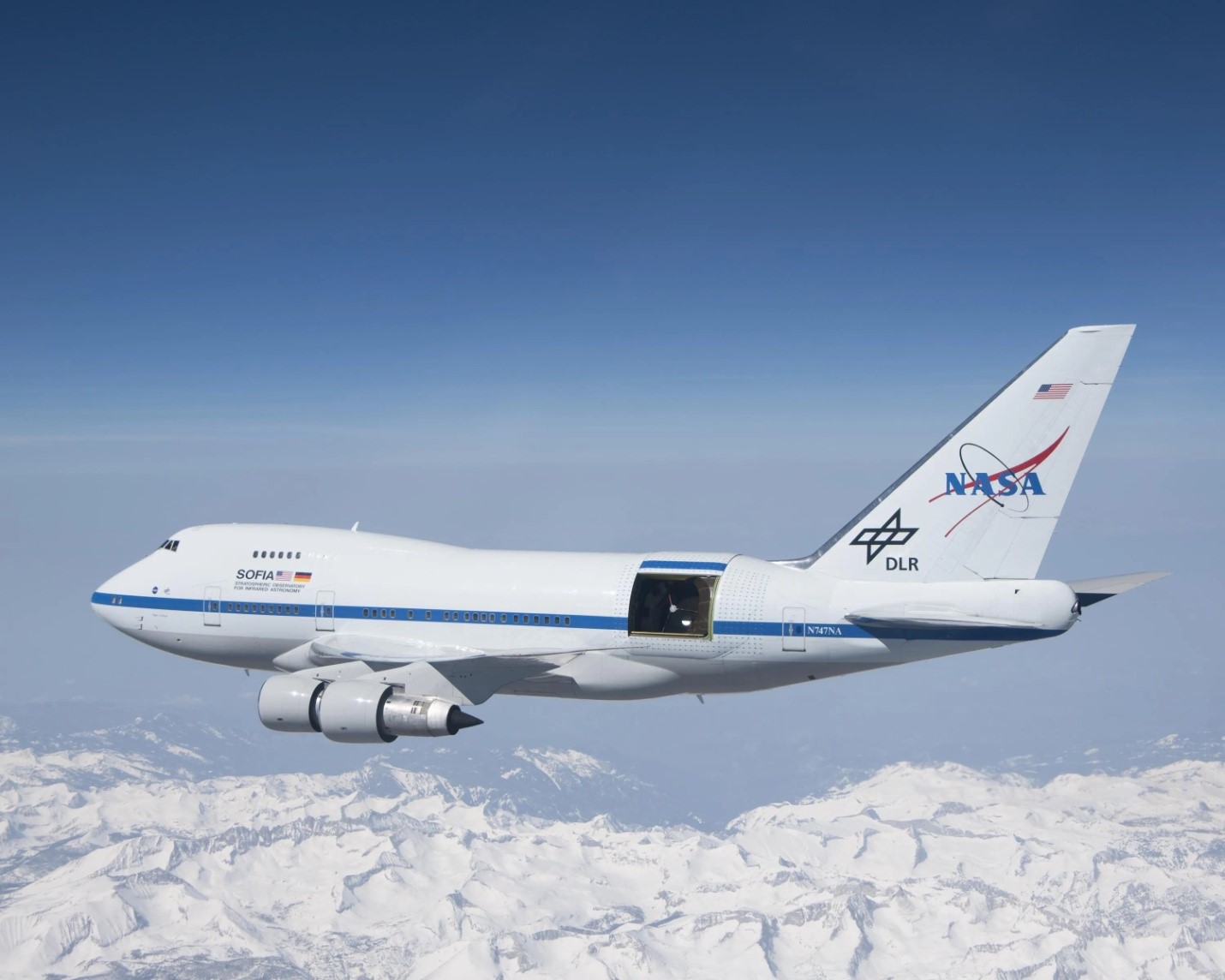Description

Disclaimer: Copyright infringement not intended.
Context
Scientists detected water molecules on the surface of two asteroids for the first time ever. The team made the discovery using data from NASA's now-retired SOFIA airborne observatory.
Details
The Flying Observatory
- SOFIA, the Stratospheric Observatory for Infrared Astronomy, was a Boeing 747SP aircraft modified to carry a 2.7-meter (106-inch) reflecting telescope (with an effective diameter of 2.5 meters or 100 inches).
- Flying into the stratosphere at 38,000-45,000 feet put SOFIA above 99 percent of Earth’s infrared-blocking atmosphere, allowing astronomers to study the solar system and beyond in ways that are not possible with ground-based telescopes.
- SOFIA was made possible through a partnership between NASA and the German Space Agency at DLR.
Functions
- The observatory’s mobility allowed researchers to observe from almost anywhere in the world, and enabled studies of transient events that often take place over oceans, where there are no telescopes.
- For example, astronomers on SOFIA studied eclipse-like events of Pluto, Saturn’s moon Titan, and Kuiper Belt Object MU69, the next flyby target for NASA’s New Horizons spacecraft, to study the objects’ atmospheres and surroundings.

SOFIA and the Infrared Universe
- SOFIA was designed to observe the infrared universe. Many objects in space emit almost all their energy at infrared wavelengths and are often invisible when observed with visible light.
- In other cases, celestial clouds of gas and dust block the light emitted by more distant objects, but infrared energy pierces through these clouds. In both cases, the only way to learn about these objects is to study the infrared light they emit.
- During 10-hour, overnight flights, SOFIA observed the solar system and beyond at mid- and far-infrared wavelengths, gathering data to study:
- Star birth and death
- Formation of new solar systems
- Identification of complex molecules in space
- Planets, comets and asteroids in our solar system
- Nebulas and galaxies
- Celestial magnetic fields
- Black holes at the center of galaxies
Instruments and How it works
- SOFIA's telescope instruments — cameras, spectrometers, and polarimeters — operated in the near-, mid- and far-infrared wavelengths, each suited to studying a particular phenomenon.
- Spectrometers spread light into its component colors, in the same way that a prism spreads visible light into a rainbow, to reveal the chemical fingerprints of celestial molecules and atoms. Polarimetersare sensitive to the effect magnetic fields have on dust in and around celestial objects, allowing astronomers to learn how magnetic fields affect the birth of stars and other objects.
- Unlike space-based telescopes, SOFIA landed after each flight, so its instruments could be exchanged, serviced or upgraded to harness new technologies.
- Because these new instruments could be tested and adjusted, SOFIA was able to explore new frontiers in the solar system and beyond and served as a testbed for technology that may one day fly in space.
|
PRACTICE QUESTIONS
SOFIA airborne observatory often mentioned in news is associated with which of the following space agency?
- NASA
- ROSCOSMOS
- JAXA
- ISRO
Answer A
|
















